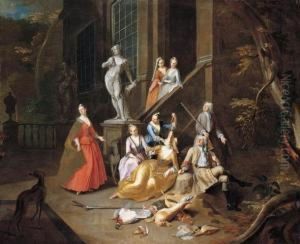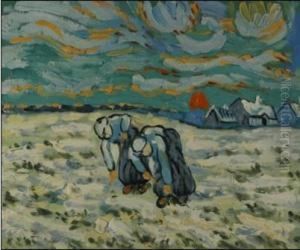Arnold Van Aken Paintings
Arnold van Aken, also known as Arnold van Aachen or Arnold van Aken, was a lesser-known Belgian painter from the late 17th and early 18th centuries. Born in 1684, details about his early life, education, and artistic training are sparse. The historical record does not offer much information about his career or the extent of his body of work. It is possible that he was active in the region of Aachen, which was a significant cultural center during his time, and his surname suggests a connection to this area.
Van Aken likely worked within the Baroque tradition, which was prevalent throughout Europe during his lifetime. The Baroque style was characterized by dramatic expression, rich color palettes, and a dynamic interplay of light and shadow. However, without concrete records of his works or more detailed biographical information, it is challenging to discuss his style or contributions to art history with certainty.
The date of Arnold van Aken's death is not recorded in historical documents, leaving an incomplete picture of his life and career. As such, he remains an enigmatic figure, and his artistic legacy is not well-documented. Some artists of the same period who achieved greater fame, such as the Flemish Baroque painters Peter Paul Rubens and Anthony van Dyck, have overshadowed lesser-known artists like van Aken. Consequently, his work has not been the subject of significant scholarly attention, and he is not widely recognized in the canon of European art history.
Given the limited information available, those interested in Arnold van Aken's work would likely need to undertake specialized research, perhaps delving into regional archives or exploring lesser-known collections that may contain his work. Without such efforts, the contributions of artists like van Aken risk remaining in obscurity, overshadowed by their more famous contemporaries.

